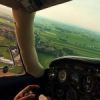Engine monitor data: explain my fuel pressure drama during climb (O-360-A1D)
-
Members Online
- redrider54
- NickG
- Rmnpilot
- Ragsf15e
- Brian E.
- Brian2034
- gwav8or
- Scooter
- Schllc
- T. Peterson
- ETXflyboy_f14
- DonMuncy
- Rwsavory
- hammdo
- AndreiC
- RangerM20
- TangoTango
- GeeBee
- dzeleski
- 1980Mooney
- Patrick Horan
- Rmfriday
- TCC
- buddy
- Nico1
- redbaron1982
- UteM20F
- 0TreeLemur
- AJ88V
- ragedracer1977
- 76Srat
- Yooper Rocketman
- skykrawler
- Yan X
- 4cornerflyer
- mooneydemi
- eman1200
- crustymuffin


Recommended Posts
Join the conversation
You can post now and register later. If you have an account, sign in now to post with your account.